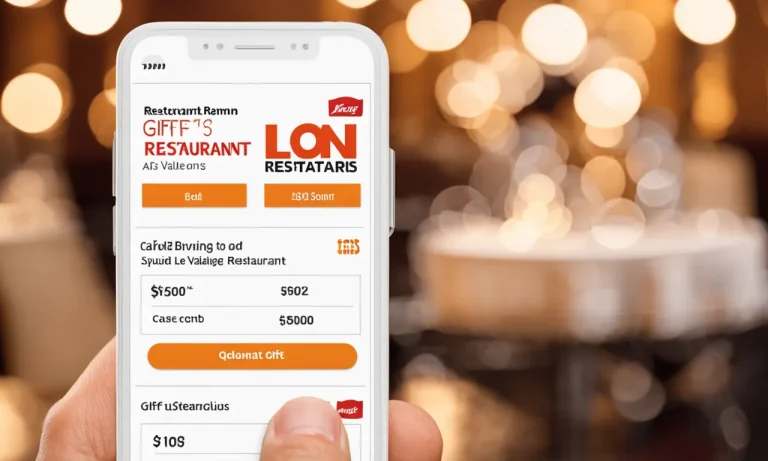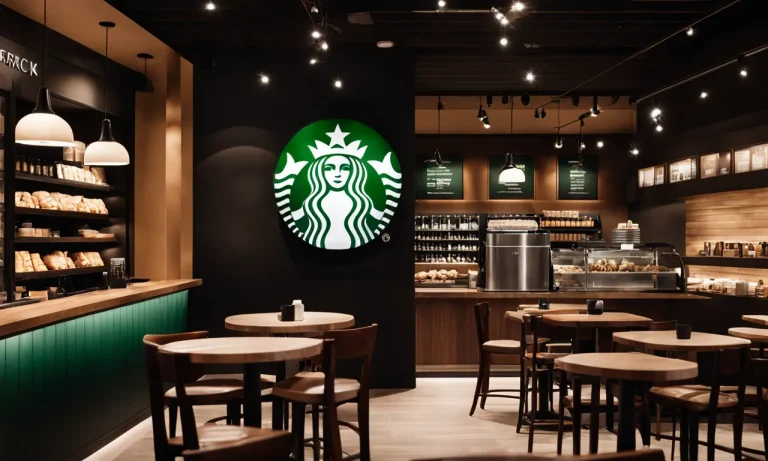Opening your own restaurant can be an incredibly rewarding endeavor, allowing you to bring your culinary vision to life. However, starting a restaurant also requires careful planning, significant funding, and hard work.
In this comprehensive guide, we’ll walk you through the key steps and considerations for starting your own successful restaurant business.
If you’re short on time, here’s a quick overview of the process: Choose a restaurant concept and brand identity, develop a business plan, secure funding, find a location, obtain licenses and permits, design the restaurant space, purchase equipment and inventory, hire and train staff, market your restaurant’s opening, and continually refine operations.
Developing Your Restaurant Concept
When starting a restaurant, one of the first steps is to develop a solid concept that will set your establishment apart from the competition. This involves making decisions on various aspects of your restaurant, including cuisine type or niche, target market and price point, and brand identity and ambiance.
Decide on a cuisine type or niche
Choosing a cuisine type or niche is an essential part of developing your restaurant concept. Consider your own passions and expertise in the culinary world, as well as the demand for certain types of cuisine in your area.
Whether you decide to open an Italian trattoria, a sushi bar, or a vegan cafe, make sure your chosen cuisine aligns with your target market’s preferences and interests.
Choose your target market and price point
Understanding your target market is crucial for the success of your restaurant. Conduct market research to identify the demographics, preferences, and dining habits of your potential customers. This will help you determine the appropriate price point for your menu items and create a dining experience that appeals to your target audience.
For example, if you are targeting millennials who appreciate healthy and sustainable food options, offering organic and locally sourced ingredients might be a selling point.
Create your brand identity and ambiance
Your brand identity and ambiance play a significant role in attracting customers and differentiating your restaurant from competitors. Consider the overall theme, decor, and atmosphere you want to create in your establishment. This should align with your chosen cuisine and target market.
For instance, if you are opening a trendy, upscale restaurant, you might opt for a sleek and modern interior design, while a family-friendly pizzeria could have a more casual and welcoming atmosphere. Remember, consistency in branding and ambiance will help build customer loyalty and recognition.
For more insights and tips on developing a restaurant concept, you can visit www.restaurant.org which offers resources and information on the restaurant industry.
Writing a Business Plan
When starting a restaurant, one of the most crucial steps is to write a comprehensive business plan that outlines your goals, strategies, and financial projections. This plan will serve as a roadmap for your restaurant’s success and help you secure funding from investors or lenders.
Here are some key steps to consider when writing your business plan:
Research the market and analyze competitors
Before diving into the details of your business plan, it’s important to thoroughly research the market and understand your target audience. Analyze the demographics of the area where you plan to open your restaurant, and identify any gaps or opportunities in the market.
Study your competitors to understand their strengths and weaknesses, and find ways to differentiate your restaurant from the competition. This research will help you develop a unique selling proposition and position your restaurant effectively in the market.
Forecast startup and operating expenses
One of the key components of your business plan is to forecast the startup and operating expenses for your restaurant. This includes costs such as lease or rent, equipment, furniture, licenses and permits, initial inventory, marketing, and staff wages.
Be sure to research and gather accurate cost estimates to create a realistic financial projection. This will help you determine how much funding you’ll need to start your restaurant and ensure that you have enough capital to cover your expenses until your business becomes profitable.
Estimate profitability and create financial projections
Creating financial projections is an essential part of your business plan. This involves estimating your restaurant’s profitability based on factors such as menu pricing, average customer spend, and expected sales volume. Use historical industry data and market research to make informed projections.
Consider factors such as seasonality and trends that may affect your restaurant’s performance. Additionally, include a break-even analysis to determine how long it will take for your restaurant to start generating profits.
Describe management team and staffing needs
Your business plan should also include a section on your management team and staffing needs. Highlight the experience and qualifications of key team members, including yourself if applicable. Outline the roles and responsibilities of each team member and explain how their skills will contribute to the success of your restaurant.
Additionally, describe your staffing needs, including the number of employees required and their roles. This will help demonstrate to potential investors and lenders that you have a capable team in place to run your restaurant.
Writing a business plan is a critical step in starting a restaurant. It helps you clarify your goals, understand your market, and secure funding. Take the time to research, analyze, and project your restaurant’s potential success.
A well-written business plan sets a strong foundation for your restaurant’s future.
Securing Funding
One of the most crucial steps in starting a restaurant is securing funding. Without adequate funds, it can be challenging to bring your culinary dreams to life. There are several options available for aspiring restaurateurs to explore, including bootstrapping, personal funds, loans, investors, and business grants.
Bootstrapping and using personal funds
Bootstrapping is a common method used by entrepreneurs to fund their businesses. It involves using personal savings or utilizing personal credit cards to finance the restaurant. This approach allows you to maintain complete control over your business without relying on external funding sources.
However, it’s important to carefully consider the risks involved, as using personal funds can put your personal finances at stake.
Another option is to seek financial support from friends and family. This can be a win-win situation, as your loved ones get to invest in your dream while providing you with the necessary capital to get your restaurant off the ground.
Just be sure to approach these arrangements with a formal agreement to avoid any potential conflicts down the line.
Leveraging loans, investors, and business grants
If bootstrapping or personal funds are not sufficient, you may need to explore additional funding options. One popular choice is obtaining a loan from a bank or financial institution. Before approaching lenders, it’s important to have a solid business plan and financial projections in place.
This will help convince them of the viability of your restaurant and increase your chances of securing the loan.
Investors are another potential source of funding. These individuals or groups may be interested in supporting your restaurant in exchange for a share of the profits or equity in the business. It’s crucial to thoroughly vet potential investors and ensure that their goals align with yours.
Consider seeking guidance from professionals, such as lawyers or accountants, to navigate the complexities of investment agreements.
Additionally, aspiring restaurateurs should explore business grants offered by government agencies or nonprofit organizations. These grants are typically awarded based on specific criteria, such as promoting local businesses or supporting innovative concepts.
Researching and applying for grants can be time-consuming, but the financial assistance they provide can be a significant boost to your restaurant’s finances.
Remember, securing funding for your restaurant is just the beginning. It’s essential to manage your finances wisely and keep a close eye on your expenses as you embark on this exciting culinary journey.
Finding the Right Location
When starting a restaurant, one of the most crucial decisions you’ll make is finding the right location. The success of your restaurant can greatly depend on its location, so it’s important to carefully consider several factors before making a final decision.
Research geographic area and demographics
Before you start searching for a location, it’s essential to research the geographic area and demographics of the area you’re interested in. Look into the local population, their income levels, and their dining preferences.
This information will help you determine if there is a demand for your type of cuisine in that particular area. Websites like www.census.gov can provide valuable demographic data to assist you in making an informed decision.
Evaluate foot traffic, visibility, and accessibility
Foot traffic, visibility, and accessibility are crucial factors to consider when choosing a location for your restaurant. Look for areas with high foot traffic, such as busy shopping centers, office complexes, or tourist attractions.
A high visibility location with easy access will attract more potential customers to your restaurant. Consider the parking availability and public transportation options in the area as well.
Inspect potential spaces and negotiate lease terms
Once you have identified a few potential locations, it’s time to inspect the spaces and negotiate lease terms. Visit each location in person to evaluate the condition of the space, its layout, and whether it meets your specific needs.
Consider the size of the space, the kitchen layout, and the dining area. Don’t be afraid to negotiate lease terms to ensure you’re getting the best deal possible. It’s always a good idea to consult with a real estate professional or lawyer to help you navigate the negotiation process.
Remember, finding the right location is a critical step in starting a successful restaurant. Take the time to research the geographic area and demographics, evaluate foot traffic, visibility, and accessibility, and meticulously inspect potential spaces before making a final decision.
By doing so, you’ll increase your chances of creating a thriving restaurant that attracts and satisfies customers.
Obtaining Licenses and Permits
Starting a restaurant requires obtaining various licenses and permits to ensure compliance with local regulations. This section will guide you through the process of getting the necessary permits to operate your restaurant.
Business license and tax IDs
The first step in obtaining licenses for your restaurant is to acquire a business license and tax identification numbers. These are essential for legal operation and tax purposes. You will need to register your restaurant as a business entity with the appropriate government agency and obtain a tax identification number.
The requirements for obtaining a business license may vary depending on your location, so it’s important to consult your local government’s website or visit their office to gather all the necessary information.
Food service permit and liquor license
In addition to the business license, you will need to obtain a food service permit to ensure that your restaurant meets health and safety standards. This permit is usually issued by the local health department and involves an inspection of your premises to ensure compliance with food safety regulations.
The requirements for obtaining a food service permit may include proper food handling and storage, sanitation practices, and employee training. If you plan to serve alcoholic beverages, you will also need to obtain a liquor license, which may have its own set of requirements and regulations.
Building permits and fire department inspections
Before opening your restaurant, you will likely need to obtain building permits and undergo inspections by the fire department. Building permits are necessary if you plan to make any structural changes or renovations to your restaurant space.
The fire department inspections, on the other hand, are conducted to ensure that your establishment meets fire safety regulations. This may include having fire extinguishers, emergency exits, and proper ventilation systems in place.
It’s important to consult your local building department and fire department for specific requirements and guidelines.
Remember that the process of obtaining licenses and permits may vary depending on your location. It’s crucial to research and understand the specific requirements and regulations in your area. Make sure to allow enough time for the application process, as it can often take several weeks or even months to obtain all the necessary permits.
Failure to obtain the required licenses and permits can result in fines, penalties, or even the closure of your restaurant. So, it’s always better to be proactive and ensure that you are compliant with all the legal requirements.
Designing and Building Out Your Restaurant
When starting a restaurant, one of the most crucial steps is designing and building out the space. This process involves hiring professionals, planning the layout, and obtaining the necessary equipment and fixtures.
Hire an architect and general contractor
Before embarking on the design and construction of your restaurant, it is essential to hire an architect and a general contractor. The architect will help you create a functional and visually appealing space that aligns with your concept and brand.
They will work with you to develop blueprints and ensure that the design meets all local building codes and regulations. A general contractor will oversee the construction process, coordinating various trades and ensuring that the project stays on schedule and within budget.
Plan kitchen layout and dining space
The layout of your restaurant is a key factor in its success. It should be designed to maximize efficiency and create a pleasant dining experience for your customers. When planning the kitchen layout, consider the flow of food preparation, storage areas, and ease of movement for your staff.
For the dining space, think about the seating capacity, table arrangements, and overall ambiance. It’s important to strike a balance between functionality and aesthetics to create a space that customers will enjoy.
Obtain necessary equipment and fixtures
Once you have finalized the design and layout, it’s time to obtain the necessary equipment and fixtures for your restaurant. This includes items such as cooking appliances, refrigeration units, tables, chairs, lighting fixtures, and decorative elements.
It’s important to carefully research and select high-quality equipment that will meet your needs and withstand the demands of a busy restaurant environment. Consider factors such as energy efficiency, durability, and ease of maintenance when making your choices.
When it comes to designing and building out your restaurant, it’s crucial to invest time and effort into creating a space that reflects your vision and meets the needs of your customers. By hiring professionals, carefully planning the layout, and selecting the right equipment, you’ll be on your way to creating a successful and inviting dining establishment.
Purchasing Inventory and Supplies
Once you have finalized your restaurant concept and secured a location, it’s time to start purchasing inventory and supplies. This step is crucial to ensure that your restaurant is well-equipped to meet the demands of your customers.
Here are some key aspects to consider when purchasing inventory and supplies for your restaurant:
Vet vendors and food/beverage distributors
It’s essential to carefully vet vendors and food/beverage distributors before making any purchases. Do your research and choose suppliers who offer high-quality products at competitive prices. Check their reputation, read reviews, and ask for recommendations from other restaurant owners.
Building strong relationships with reliable vendors will ensure a steady supply of fresh ingredients and other necessary items.
Stock kitchen with ingredients, tools, and smallwares
Stocking your kitchen with the right ingredients, tools, and smallwares is vital for smooth operations. Create a comprehensive list of all the items you’ll need, ranging from basic pantry staples to specialized equipment.
Consider the type of cuisine you’ll be serving and tailor your purchases accordingly. Investing in high-quality tools and equipment is crucial for efficiency and maintaining consistency in your food preparation.
When it comes to smallwares, such as utensils, cookware, and storage containers, opt for durable and easy-to-clean options. Remember to keep track of inventory levels to avoid running out of essential items during peak hours.
Buy front-of-house items like menus, POS, and decor
Aside from the kitchen, don’t forget to purchase front-of-house items that contribute to the overall dining experience. This includes menus, point-of-sale (POS) systems, and decor. Your menu should reflect your restaurant’s concept and be visually appealing.
Consider using high-quality materials and engaging descriptions to entice customers.
Investing in a reliable POS system is crucial for efficient order taking, payment processing, and tracking sales. Research different options and choose a system that suits your needs and budget. Additionally, don’t underestimate the importance of decor in creating a welcoming ambiance.
Choose furniture, lighting, and decorations that align with your restaurant’s theme and target audience.
Pro tip: When purchasing inventory and supplies, consider buying in bulk to take advantage of discounts and lower costs. However, be mindful of storage space limitations and expiration dates for perishable items.
For more information on purchasing inventory and supplies for your restaurant, you can visit websites like Restaurant Depot or Sysco, which offer a wide range of products specifically for the restaurant industry.
Hiring and Training Your Staff
When starting a restaurant, one of the most crucial steps is hiring and training your staff. The success of your establishment relies heavily on the skills and dedication of your team. Here are some key tips to help you in this process:
Recruit hiring chef, managers, servers, cooks
To ensure smooth operations and excellent customer service, it is important to carefully select your staff. Start by recruiting a talented chef who can create delicious and unique dishes that will attract customers.
Hire experienced managers who can handle the day-to-day operations and effectively lead your team. When hiring servers and cooks, look for individuals with previous experience and a passion for the culinary arts.
Consider conducting interviews, checking references, and even holding a trial shift to assess their skills.
Conduct extensive training on food, service, systems
Once you have assembled your team, it is crucial to provide them with comprehensive training. This training should cover various aspects of your restaurant, including food preparation, service etiquette, and operational systems.
By investing time and effort into training, you can ensure that your staff is well-equipped to handle any situation that may arise. Consider implementing a training program that incorporates hands-on experience, role-playing exercises, and regular assessments to gauge their progress.
Set standards for customer service and operations
To create a positive dining experience for your customers, it is important to establish clear standards for customer service and operations. Clearly define your expectations regarding greeting guests, taking orders, serving food, and handling customer complaints.
Emphasize the importance of attentiveness, friendliness, and efficiency in providing exceptional service. Additionally, establish guidelines for the cleanliness and organization of your restaurant to maintain a pleasant environment for both staff and customers.
Remember, hiring and training your staff is a continuous process. Regularly evaluate their performance, provide feedback, and offer opportunities for growth and development. By investing in your team, you are investing in the success of your restaurant.
Marketing and Opening Your Restaurant
When it comes to starting a restaurant, marketing plays a crucial role in attracting customers and creating a buzz around your establishment. Here are some effective strategies to promote your restaurant and ensure a successful opening:
Promote through social media, PR, events pre-opening
Social media platforms such as Facebook, Instagram, and Twitter have become powerful marketing tools for businesses, including restaurants. Create enticing content, share mouthwatering food pictures, and engage with your audience to build excitement.
Additionally, consider running targeted ads to reach potential customers in your area.
Public relations (PR) is another effective way to generate buzz before your restaurant’s opening. Reach out to local food bloggers, journalists, and influencers who can help spread the word about your establishment.
Offer them a sneak peek or invite them for a tasting event to get them excited about your menu and ambiance.
In addition to social media and PR, consider organizing events before your official opening. This could include pop-up dinners, cooking classes, or even charity events. These pre-opening events not only allow you to showcase your culinary skills but also create anticipation among potential customers.
Host a soft opening for friends and family
A soft opening is a great way to test your restaurant’s operations and receive valuable feedback from friends and family. Invite them to dine at your restaurant free of charge or at a discounted rate. This will not only help you iron out any operational issues but also create a positive word-of-mouth buzz among your loved ones.
During the soft opening, encourage your guests to provide honest feedback about the food, service, and overall experience. This feedback will enable you to make necessary improvements before your grand opening.
Execute a grand opening event to create buzz
The grand opening of your restaurant is the perfect opportunity to create a memorable experience for your guests and make a lasting impression. Consider hosting an event that reflects the ambiance and theme of your restaurant.
You can partner with local musicians or DJs to provide live entertainment, collaborate with nearby businesses for cross-promotions, or even organize a ribbon-cutting ceremony with local dignitaries. The key is to create a sense of excitement and make your grand opening an event that people will be talking about for weeks to come.
Remember, the success of your restaurant doesn’t solely rely on the quality of your food and service. Effective marketing and a well-executed opening can go a long way in attracting customers and building a loyal following.
Ongoing Management and Growth
Once your restaurant is up and running, it’s important to continuously monitor your financials and sales data to ensure the success and profitability of your business. Keeping a close eye on your expenses and revenue will help you make informed decisions and identify areas where you can cut costs or increase revenue.
Utilize accounting software or hire a professional accountant to track your financials accurately and efficiently.
Continuously monitor financials and sales data
Regularly analyzing your financials and sales data will give you valuable insights into the performance of your restaurant. By tracking key metrics such as revenue, profit margins, and customer acquisition costs, you can identify trends and patterns that can help you make data-driven decisions.
For example, if you notice a decline in sales during a specific time period, you can investigate the reasons behind it and take appropriate actions to address the issue.
Additionally, conducting regular inventory checks can help you identify any discrepancies or inefficiencies in your supply chain. This will enable you to optimize your inventory management and reduce waste, ultimately saving you money in the long run.
Solicit customer feedback and refine offerings
Listening to your customers is essential for the long-term success of your restaurant. Actively seeking feedback from your patrons will not only help you improve your offerings but also build customer loyalty.
Consider implementing a feedback system, such as comment cards or online surveys, to gather valuable insights from your customers.
Take customer feedback seriously and use it to refine your menu, improve service quality, and address any issues or concerns raised by your customers. By continuously striving to meet and exceed customer expectations, you can create a positive dining experience that will keep customers coming back and attract new ones through word-of-mouth recommendations.
Implement marketing campaigns and loyalty programs
Marketing plays a crucial role in the growth of any business, and your restaurant is no exception. Develop a comprehensive marketing strategy that includes both online and offline channels to reach your target audience effectively.
Utilize social media platforms, email marketing, and search engine optimization to increase your restaurant’s visibility and attract new customers.
In addition to attracting new customers, it’s equally important to retain existing ones. Implementing loyalty programs can be an effective way to reward your loyal customers and encourage repeat visits.
Consider offering discounts, special promotions, or exclusive perks to customers who frequent your establishment. Not only will this help foster customer loyalty, but it can also increase revenue through repeat business.
Remember, ongoing management and growth require continuous effort and adaptation. Stay informed about industry trends and best practices, and be open to making changes when necessary. By staying proactive and responsive to market demands, you can position your restaurant for long-term success and growth.
Conclusion
Starting a successful restaurant takes extensive planning, significant capital, and hard work. But with passion for the business and commitment to delighting customers, you can turn your dream into a thriving dining establishment.
Follow the key steps outlined here, conduct in-depth research, and leverage expert advice to mitigate risks and set your new restaurant up for prosperity.






